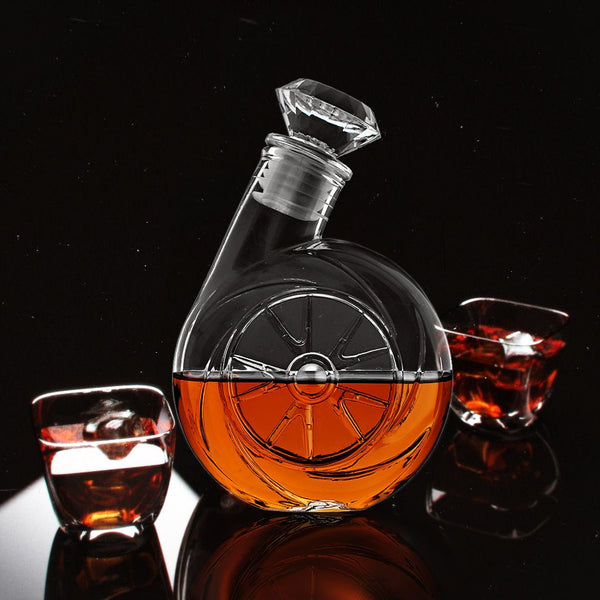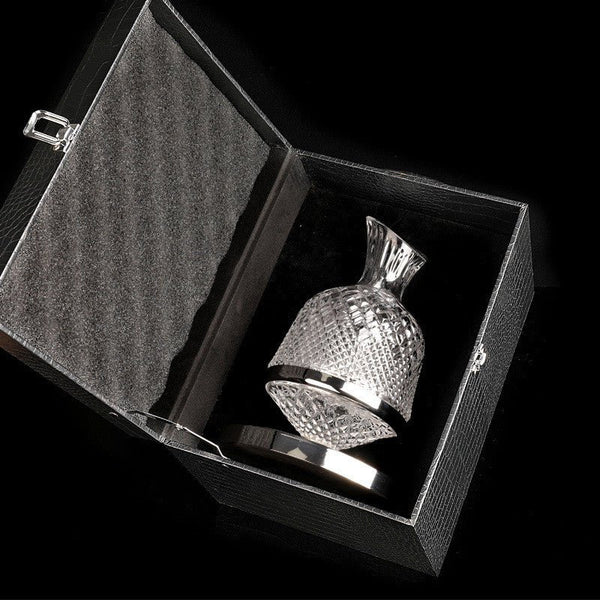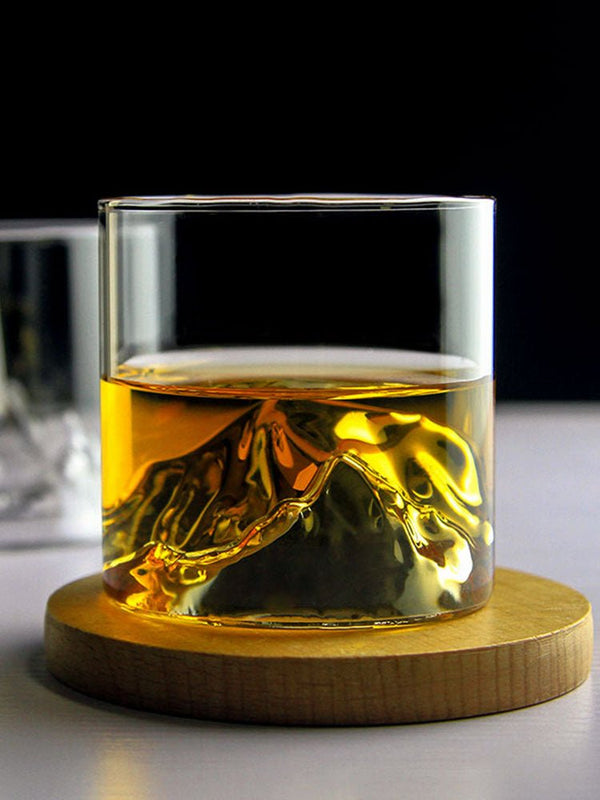Should you let Whisky breathe?
Products on sale
-
 Turbocharger Whiskey Decanter
Turbocharger Whiskey Decanter
- Regular price
- $42.99
- Sale price
- $42.99
- Regular price
-
$56.99 - Unit price
- per
Sold out -
 Crystal-cut Rotating Decanter
Crystal-cut Rotating Decanter
- Regular price
- from $119.81
- Sale price
- from $119.81
- Regular price
-
$160.00 - Unit price
- per
Sold out -
 Japanese Whisky Glass
Japanese Whisky Glass
- Regular price
- from $24.99
- Sale price
- from $24.99
- Regular price
-
- Unit price
- per
Sold out
Whisky, much like fine wine, benefits from a bit of breathing time.
Allowing whisky to breathe can enhance its flavors, aromas, and overall drinking experience. But what does it really mean to let whisky breathe? How long should you let it breathe? And is it necessary for all types of whisky?
This article aims to answer these questions and more, providing a comprehensive guide to the practice of letting whisky breathe.
What does letting whisky breathe mean?
Letting whisky breathe involves exposing it to air for a period before drinking.
This exposure allows volatile compounds to evaporate and oxygen to interact with the whisky, often leading to a more nuanced and enjoyable tasting experience.
When you pour whisky into a glass and let it sit for a while, you're essentially letting it breathe.
Why let whisky breathe?
The main reason for letting whisky breathe is to improve its flavor and aroma.
When whisky is first poured, it may have a strong alcohol scent that can overpower its more subtle notes.
Allowing it to breathe helps dissipate the initial alcohol burn, revealing the underlying complexity of the spirit.
This process can make the whisky taste smoother and more balanced.
How long should you let whisky breathe?
The amount of time you should let whisky breathe can vary depending on the type and age of the whisky. Here are some general guidelines:
- Younger whiskies (under 10 years): These whiskies typically benefit from around 10-15 minutes of breathing time. They often have more volatile compounds that need to evaporate.
- Older whiskies (10-20 years): These whiskies usually benefit from 20-30 minutes of breathing time. They have more complex flavors that need time to develop.
- Very old whiskies (over 20 years): These whiskies can benefit from even longer breathing times, sometimes up to an hour. The delicate and intricate flavors of these whiskies need more time to fully reveal themselves.
How to let whisky breathe
Letting whisky breathe is a simple process. Heres a step-by-step guide:
- Choose the right glass: The best glass for letting whisky breathe is a tulip-shaped glass, like a Glencairn glass. Its shape concentrates the aromas, enhancing the smelling and tasting experience.
- Pour the whisky: Pour a small amount of whisky into the glass, typically around 30-50ml.
- Swirl the whisky: Gently swirl the glass to increase the whisky's contact with air. This helps release the volatile compounds.
- Wait: Let the whisky sit undisturbed for the recommended breathing time.
- Smell and taste: After the breathing time, take a moment to smell the whisky and then taste it. You should notice a difference in the aromas and flavors.
Does letting whisky breathe improve all whiskies?
While letting whisky breathe can improve the drinking experience for many whiskies, its not a universal rule.
Some whiskies, particularly those with delicate or subtle flavors, might not need as much breathing time.
In some cases, over-breathing can even diminish certain desirable characteristics.
Its often a matter of personal preference and experimentation.
The role of decanters in letting whisky breathe
Decanters are often used to let whisky breathe, and they can also serve as elegant display pieces. However, not all decanters are created equal.
The best whisky decanters are designed to allow a moderate amount of air exposure without compromising the whisky's integrity over time.
When using a decanter, its essential to ensure that it has a good seal to prevent excessive evaporation and oxidation.
Common misconceptions about letting whisky breathe
There are several misconceptions about letting whisky breathe. Here are a few of the most common ones:
- "All whiskies need to breathe for a long time." While some whiskies benefit from extended breathing, others do not. Its essential to consider the type and age of the whisky.
- "Breathing will always improve the whisky." Not necessarily. Some whiskies are best enjoyed straight from the bottle, especially those designed to be drunk fresh.
- "Breathing and decanting are the same." While related, they are not the same. Breathing typically refers to letting whisky sit in a glass, while decanting involves transferring whisky to another container.
Tips for enjoying whisky at its best
To enjoy whisky at its best, consider these additional tips:
- Use proper glassware: The shape and size of your glass can significantly impact your whisky tasting experience.
- Pay attention to temperature: Whisky is best enjoyed at room temperature. Too much heat or cold can mask its flavors.
- Experiment with water: Adding a few drops of water can open up the whisky, revealing hidden notes.
- Take your time: Whisky is meant to be savored. Take your time to appreciate its complexity.
FAQ
How long should you let whisky breathe?
The breathing time can vary. Younger whiskies might need 10-15 minutes, older whiskies 20-30 minutes, and very old whiskies up to an hour.
Does letting whisky breathe improve its taste?
In many cases, yes. Letting whisky breathe can help reduce the initial alcohol burn and enhance its flavors and aromas. However, it's not necessary for all whiskies.
Can you let whisky breathe in the bottle?
No, letting whisky breathe involves exposing it to air. Keeping it in the bottle won't have the same effect as pouring it into a glass or decanter.
Is it necessary to use a decanter?
While not necessary, a decanter can be useful for letting whisky breathe and for presentation. The best whisky decanters have a good seal to prevent excessive evaporation.
Can you over-breathe whisky?
Yes, over-breathing can diminish certain desirable characteristics of whisky, especially in more delicate varieties. It's essential to experiment and find the right balance.
Letting whisky breathe can significantly enhance your drinking experience, revealing the spirits full complexity and richness. Whether you're enjoying a young, vibrant whisky or a finely aged one, understanding and experimenting with breathing can help you appreciate your favorite dram even more.



